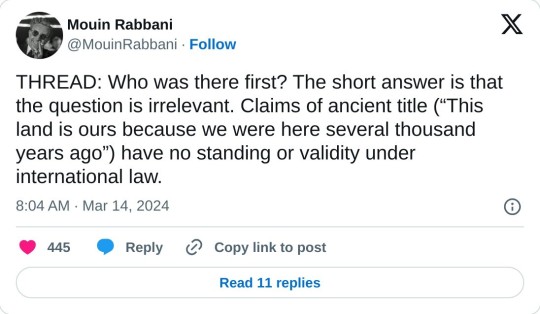#middle east northern africa
Photo

Minimum wage in Arab countries
49 notes
·
View notes
Note
au where ion is balkan instead of nalkan
My brother in wan he is from the balkans in like. Most of the canons. I am 95% sure.
#i cant remember if it's mentioned in an article or if my brain made this up but in solius canon he's from the Persian Mesopotamian region#sarkic empire covers the Middle East n parts of modern Russia and Northern Africa#started pushing more into the balkans which is where the coalition of kingdoms resistance really started#took over the rest of the daevite empire which went down towards India too#dunno thats my interpretation#solius asks#i must admit I have not taken a world history class I could be wrong about some of these places so always#feel free to correct me on cultural and geographical regions#i try to research but google doesn't always give me good sources
28 notes
·
View notes
Photo

Flemish School
The Tower of Babel. 17th century
-
The subject of the Tower of Babel is from Genesis (11:1-9) and recounts how the people, who all spoke a common language, decided to build a tower, the top of which would reach to the heavens.
#flemish#netherland#netherlandish#babel#the bible#the tower of babel#tower of babel#17th century#art#fine art#fine arts#oil painting#europe#european#europa#mediterranean#mesopotamia#cradle of humanity#middle east#northern africa#bible#christentum#jewish#hebrew#flanders#netherlands
65 notes
·
View notes
Text
eggplants are a species whose origins are shrouded in mystery but delectable and wonderful all the same in the modern day
#every article i’ve read about the origins of eggplants calls them mysterious and controversial#probably northern/eastern africa ish then spread through the middle east into india and china where we have written records from#around the first century CE. probably.#best vegetable no matter what. they’re even in the nightshade family. they can do it all
1 note
·
View note
Note
the middle east falls in both asia and africa, it’s also a historically inconsistent term
yeah but its in africa. im in a long standing feud with the new york times crossword over it.
#like i get that geographically it falls in both#and ultimately geographic terms are arbitrary and based in mostly eurocentric ideas of the world and mostly dont have an official def#but historically and culturally the middle east is much closer to northern africa then central or south asia#which is why i like MENA as a term#it tracks much closer to the reality of the relationships between these regions#using the examples of the arab league#i just find the term west asia to be meaningless and worst....unhelpful#except in sports i guess which fine whatever#idk i know its a silly hill to die on but here i am#i am arab btw#which is why i am fired up about it
0 notes
Text
Two dead, 16 injured in train derailment in Egypt | CNN
CNN
—
At least two people were killed, and 16 others were injured after a train derailed north of Cairo on Tuesday, according to Egypt’s Health Ministry.
The train crashed into a train station platform in the city of Qalyub, the Ministry of Transport said in statement.
About 20 ambulances rushed to the scene to assist the wounded.
Kamel El-Wazir, Egyptian transport minister, has ordered a…

View On WordPress
#accidents#africa#brand safety-nsf accidents and disasters#brand safety-nsf sensitive#Business#business and industry sectors#continents and regions#disasters and safety#economy and trade#egypt#iab-disasters#middle east and north africa#northern africa#rail transportation#train accidents#trains#transportation and warehousing
0 notes
Text
Sub-Saharan African countries repatriating citizens from Tunisia after 'shocking' statements from country's president | CNN
CNN
—
Several sub-Saharan countries, including Ivory Coast, Mali, Guinea and Gabon, are helping their citizens return from Tunisia following controversial remarks from the country’s president last month concerning illegal immigration into the North African country.
In a meeting of Tunisia’s National Security Council on February 21, President Kais Saied described alleged illegal border…

View On WordPress
#Africa#continents and regions#domestic alerts#domestic-international news#middle east and north africa#northern africa#Tunisia
0 notes
Text
Sub-Saharan African countries repatriating citizens from Tunisia after 'shocking' statements from country's president | CNN
CNN
—
Several sub-Saharan countries, including Ivory Coast, Mali, Guinea and Gabon, are helping their citizens return from Tunisia following controversial remarks from the country’s president last month concerning illegal immigration into the North African country.
In a meeting of Tunisia’s National Security Council on February 21, President Kais Saied described alleged illegal border…

View On WordPress
#africa#continents and regions#domestic alerts#domestic-international news#middle east and north africa#northern africa#tunisia
0 notes
Photo







Thistle mantis, Blepharopsis mendica, Empusidae (Gargoyle Mantises)
Found across northern Africa, through the Middle East, and into Central and South Asia
Photos 1-2 by akkartrail, 3 by maylandia-curtis, 4 by yakov_salaviz, 5-6 by sausubel, and 7 (for scale) by noahm7
#animals#curators on tumblr#insects#bugs#mantis#mantid#praying mantis#thistle mantis#gargoyle mantis#one nice bug#camouflage
3K notes
·
View notes
Text
Show just how cold the States are this weekend, I am about as far south as you can go and still be in the country, 70 degrees Fahrenheit (21 Celsuis) is considered chilly out here, and we’ve got a Freeze Watch going on.
So, yeah, there’s a weird thing that whenever my family moves some where at some point it snows so, if it does, then I am sorry for bringing this curse on everyone north of me we never asked for any of this mess.
#for my international followers my city is on level with northern mexico north africa and the center cut of the middle east and south asia#it's not supposed to be freezing cold at sea level down here
1 note
·
View note
Text
Rcfyoe
CLICK HEAR TO HAVE SOME FUN!

#cultural clothing#folk costume#traditional dress#southeast asia#international politics#macaddam#onlylove#northern europe#middle east and north africa#trial and procedure
1 note
·
View note
Text
Al Najma products in Scotland

#Al Najma products are available at Babylon supermarket. Al Najma is a renowned brand in the Middle East and North Africa. They have been aro#and their products are made from the finest produce from the region. They offer a range of Halal meat and poultry#such as chicken#beef#lamb#turkey#and duck. Babylon supermarket is a one-stop shop for all your grocery needs. They offer an extensive range of high quality products at comp#England#Wales and Northern Ireland.#The Al Najma Products was founded Babylon supermarket providing quality products to the customers across Scotland. They have been in the ma#For more information visit on https://babylonsupermarket.com/frozen-food.php
0 notes
Text

Sindh Saw-scaled Viper (Echis carinatus sochureki), juvenile, family Viperidae, Al Batinah South Governorate, Oman
Saw-scaled vipers are regarded by some as “the most dangerous snake in the world”. They are responsible for more deadly snake bites than any other species.
Though they are not the most potently venomous snake in the world, they do have very potent venom.
They have a huge geographic range, across northern Africa, the Middle East, and the Indian subcontinent.
They are rather aggressive (in defense), and will strike multiple times.
There are 5 subspecies.
photograph by James Christensen
272 notes
·
View notes
Text

twitter thread by Mouin Rabbani
March 14, 2024
Who was there first? The short answer is that the question is irrelevant. Claims of ancient title (“This land is ours because we were here several thousand years ago”) have no standing or validity under international law.
For good reason, because such claims also defy elementary common sense. Neither I nor anyone reading this post can convincingly substantiate the geographical location of their direct ancestors ten or five or even two thousand years ago.
If we could, the successful completion of the exercise would confer exactly zero property, territorial, or sovereign rights.
As a thought experiment, let’s go back only a few centuries rather than multiple millennia. Do South Africa’s Afrikaners have the right to claim The Netherlands as their homeland, or even qualify for Dutch citizenship, on the basis of their lineage?
Do the descendants of African-Americans who were forcibly removed from West Africa have the right to board a flight in Atlanta, Port-au-Prince, or São Paolo and reclaim their ancestral villages from the current inhabitants, who in all probability arrived only after – perhaps long after – the previous inhabitants were abducted and sold into slavery half a world away?
Do Australians who can trace their roots to convicts who were involuntarily transported Down Under by the British government have a right to return to Britain or Ireland and repossess homes from the present inhabitants even if, with the help of court records, they can identify the exact address inhabited by their forebears? Of course not.
In sharp contrast to, for example, Native Americans or the Maori of New Zealand, none of the above can demonstrate a living connection with the lands to which they would lay claim.
To put it crudely, neither nostalgic attachment nor ancestry, in and of themselves, confer rights of any sort, particularly where such rights have not been asserted over the course of hundreds or thousands of years.
If they did, American English would be the predominant language in large parts of Europe, and Spain would once again be speaking Arabic.
Nevertheless, the claim of ancient title has been and remains central to Zionist assertions of not only Jewish rights in Palestine, but of an exclusive Jewish right to Palestine.
For the sake of argument, let’s examine it. If we put aside religious mythology, the origin of the ancient Israelites is indeed local.
In ancient times it was not unusual for those in conflict with authority or marginalized by it to take to the more secure environment of surrounding hills or mountains, conquer existing settlements or establish new ones, and in the ultimate sign of independence adopt distinct religious practices and generate their own rulers. That the Israelites originated as indigenous Canaanite tribes rather than as fully-fledged monotheistic immigrants or conquerors is more or less the scholarly consensus, buttressed by archeological and other evidence. And buttressed by the absence of evidence for the origin stories more familiar to us.
It is also the scholarly consensus that the Israelites established two kingdoms, Judah and Israel, the former landlocked and covering Jerusalem and regions to the south, the latter (also known as the Northern Kingdom or Samaria) encompassing points north, the Galilee, and parts of contemporary Jordan. Whether these entities were preceded by a United Kingdom that subsequently fractured remains the subject of fierce debate.
What is certain is that the ancient Israelites were never a significant regional power, let alone the superpower of the modern imagination.
There is a reason the great empires of the Middle East emerged in Egypt, Mesopotamia, Persia, and Anatolia – or from outside the region altogether – but never in Palestine.
It simply lacked the population and resource base for power projection. Jerusalem may be the holiest of cities on earth, but for almost the entirety of its existence, including the period in question, it existed as a village, provincial town or small city rather than metropolis.
Judah and Israel, like the neighboring Canaanite and Philistine entities during this period, were for most of their existence vassal states, their fealty and tribute fought over by rival empires – Egyptians, Assyrians, Babylonians, etc. – rather than extracted from others.
Indeed, Israel was destroyed during the eighth century BCE by the Assyrians, who for good measured subordinated Judah to their authority, until it was in the sixth century BCE eliminated by the Babylonians, who had earlier overtaken the Assyrians in a regional power struggle.
The Babylonian Exile was not a wholesale deportation, but rather affected primarily Judah’s elites and their kin. Nor was there a collective return to the homeland when the opportunity arose several decades later after Cyrus the Great defeated Babylon and re-established a smaller Judah as a province of the Persian Achaemenid empire. Indeed, Mesopotamia would remain a key center of Jewish religion and culture for centuries afterwards.
Zionist claims of ancient title conveniently erase the reality that the ancient Israelites were hardly the only inhabitants of ancient Palestine, but rather shared it with Canaanites, Philistines, and others.
The second part of the claim, that the Jewish population was forcibly expelled by the Romans and has for 2,000 years been consumed with the desire to return, is equally problematic.
By the time the Romans conquered Jerusalem during the first century BCE, established Jewish communities were already to be found throughout the Mediterranean world and Middle East – to the extent that a number of scholars have concluded that a majority of Jews already lived in the diaspora by the time the first Roman soldier set foot in Jerusalem.
These communities held a deep attachment to Jerusalem, its Temple, and the lands recounted in the Bible. They identified as diasporic communities, and in many cases may additionally have been able to trace their origins to this or that town or village in the extinguished kingdoms of Israel and Judah. But there is no indication those born and bred in the diaspora across multiple generations considered themselves to be living in temporary exile or considered the territory of the former Israelite kingdoms rather than their lands of birth and residence their natural homeland, any more than Irish-Americans today feel they properly belong in Ireland rather than the United States.
Unlike those taken in captivity to Babylon centuries earlier, there was no impediment to their relocation to or from their ancestral lands, although economic factors appear to have played an important role in the growth of the diaspora.
By contrast, those traveling in the opposite direction appear to have done so, more often than not, for religious reasons, or to be buried in Jerusalem’s sacred soil.
Nations and nationalism did not exist 2,000 years ago.
Nor Zionist propagandists in New York, Paris, and London incessantly proclaiming that for two millennia Jews everywhere have wanted nothing more than to return their homeland, and invariably driving home rather than taking the next flight to Tel Aviv.
Nor insufferably loud Americans declaring, without a hint of irony or self-awareness, the right of the Jewish people to Palestine “because they were there first”.
Back to the Romans, about a century after their arrival a series of Jewish rebellions over the course of several decades, coupled with internecine warfare between various Jewish factions, produced devastating results.
A large proportion of the Jewish population was killed in battle, massacred, sold into slavery, or exiled. Many towns and villages were ransacked, the Temple in Jerusalem destroyed, and Jews barred from entering the city for all but one day a year.
Although a significant Jewish presence remained, primarily in the Galilee, the killings, associated deaths from disease and destitution, and expulsions during the Roman-Jewish wars exacted a calamitous toll.
With the destruction of the Temple Jerusalem became an increasingly spiritual rather than physical center of Jewish life. Jews neither formed a demographic majority in Palestine, nor were the majority of Jews to be found there.
Many of those who remained would in subsequent centuries convert to Christianity or Islam, succumb to massacres during the Crusades, or join the diaspora. On the eve of Zionist colonization locally-born Jews constituted less than five per cent of the total population.
As for the burning desire to return to Zion, there is precious little evidence to substantiate it. There is, for example, no evidence that upon their expulsion from Spain during the late fifteenth century, the Sephardic Jewish community, many of whom were given refuge by the Ottoman Empire that ruled Palestine, made concerted efforts to head for Jerusalem. Rather, most opted for Istanbul and Greece.
Similarly, during the massive migration of Jews fleeing persecution and poverty in Eastern Europe during the nineteenth century, the destinations of choice were the United States and United Kingdom.
Even after the Zionist movement began a concerted campaign to encourage Jewish emigration to Palestine, less than five per cent took up the offer. And while the British are to this day condemned for limiting Jewish immigration to Palestine during the late 1930s, the more pertinent reality is that the vast majority of those fleeing the Nazi menace once again preferred to relocate to the US and UK, but were deprived of these havens because Washington and London firmly slammed their doors shut.
Tellingly, the Jewish Agency for Israel in 2023 reported that of the world’s 15.7 million Jews, 7.2 million – less than half – reside in Israel and the occupied Palestinian territories.
According to the Agency, “The Jewish population numbers refer to persons who define themselves as Jews by religion or otherwise and who do not practice another religion”.
It further notes that if instead of religion one were to apply Israel’s Law of Return, under which any individual with one or more Jewish grandparent is entitled to Israeli citizenship, only 7.2 of 25.5 million eligible individuals (28 per cent) have opted for Zion.
In other words, “Next Year in Jerusalem” was, and largely remains, an aspirational religious incantation rather than political program. For religious Jews, furthermore, it was to result from divine rather than human intervention.
For this reason, many equated Zionism with blasphemy, and until quite recently most Orthodox Jews were either non-Zionist or rejected the ideology altogether.
Returning to the irrelevant issue of ancestry, if there is one population group that can lay a viable claim of direct descent from the ancient Israelites it would be the Samaritans, who have inhabited the area around Mount Gerizim, near the West Bank city of Nablus, without interruption since ancient times.
Palestinian Jews would be next in line, although unlike the Samaritans they interacted more regularly with both other Jewish communities and their gentile neighbors.
Claims of Israelite descent made on behalf of Jewish diaspora communities are much more difficult to sustain. Conversions to and from Judaism, intermarriage with gentiles, absorption in multiple foreign societies, and related phenomena over the course of several thousand years make it a virtual certainty that the vast majority of Jews who arrived in Palestine during the late 19th and first half of the 20th century to reclaim their ancient homeland were in fact the first of their lineage to ever set foot in it.
By way of an admittedly imperfect analogy, most Levantines, Egyptians, Sudanese, and North Africans identify as Arabs, yet the percentage of those who can trace their roots to the tribes of the Arabian Peninsula that conquered their lands during the seventh and eighth centuries is at best rather small.
Ironically, a contemporary Palestinian, particularly in the West Bank and Galilee, is likely to have more Israelite ancestry than a contemporary diaspora Jew.
The Palestinians take their name from the Philistines, one of the so-called Sea Peoples who arrived on the southern coast of Canaan from the Aegean islands, probably Crete, during the late second millennium BCE.
They formed a number of city states, including Gaza, Ashdod, and Ashkelon. Like Judah and Israel they existed primarily as vassals of regional powers, and like them were eventually destroyed by more powerful states as well.
With no record of their extermination or expulsion, the Philistines are presumed to have been absorbed by the Canaanites and thereafter disappear from the historical record.
Sitting at the crossroads between Asia, Africa, and Europe, Palestine was over the centuries repeatedly conquered by empires near and far, absorbing a constant flow of human and cultural influences throughout.
Given its religious significance, pilgrims from around the globe also contributed to making the Palestinian people what they are today.
A common myth is that the Palestinian origin story dates from the Arab-Muslim conquests of the seventh century. In point of fact, the Arabs neither exterminated nor expelled the existing population, and the new rulers never formed a majority of the population.
Rather, and over the course of several centuries, the local population was gradually Arabized, and to a large extent Islamized as well.
So the question as to who was there first can be answered in several ways: “both” and “irrelevant” are equally correct.
Indisputably, the Zionist movement had no right to establish a sovereign state in Palestine on the basis of claims of ancient title, which was and remains its primary justification for doing so.
That it established an exclusivist state that not only rejected any rights for the existing Palestinian population but was from the very outset determined to displace and replace this population was and remains a historical travesty.
That it as a matter of legislation confers automatic citizenship on millions who have no existing connection with the land but denies it to those who were born there and expelled from it, solely on the basis of their identity, would appear to be the very definition of apartheid.
The above notwithstanding, and while the Zionist claim of exclusive Israeli sovereignty in Palestine remains illegitimate, there are today several million Israelis who cannot be simply wished away.
A path to co-existence will need to be found, even as the genocidal nature of the Israeli state, and increasingly of Israeli society as well, makes the endeavor increasingly complicated.
The question, thrown into sharp relief by Israel’s genocidal onslaught on the Palestinian population of the Gaza Strip, is whether co-existence with Israeli society can be achieved without first dismantling the Israeli state and its ruling institutions.
246 notes
·
View notes
Text
Animal of the Day!
Northern Bald Ibis (Geronticus eremita)

(Photo by Richard Bartz)
Conservation Status- Endangered
Habitat- Morocco; Turkey
Size (Weight/Length)- 1.3 kg; 80 cm
Diet- Insects; Reptiles; Snails; Scorpions; Small mammals
Cool Facts- The Northern bald ibis could once be found across Europe, the Middle East, and Africa but hunting and persecution has driven this bird to near extinction. With less than 700 birds in the wild and 2,000 in captive breeding programs, efforts to reintroduce these non-wading ibis are intensive. The Northern bald ibis live in small groups on cliff ledges and arid steppes as they search for insects and small mammals. These ibis have a close connection with Mediterranean culture. In Ancient Egypt, these birds were sacred and considered the embodiment of Thoth. Greek Stymphalian birds were possibly based on Northern bald ibis. In Turkey, these ibis are symbols of fertility and were thought to be the first animal released from Noah’s Ark.
Rating- 13/10 (A conservation success story in the making.)
#animal of the day#animals#birds#ibis#saturday#september 16#northern bald ibis#biology#science#conservation#the more you know#mythology#egyptian mythology#greek mythology
325 notes
·
View notes